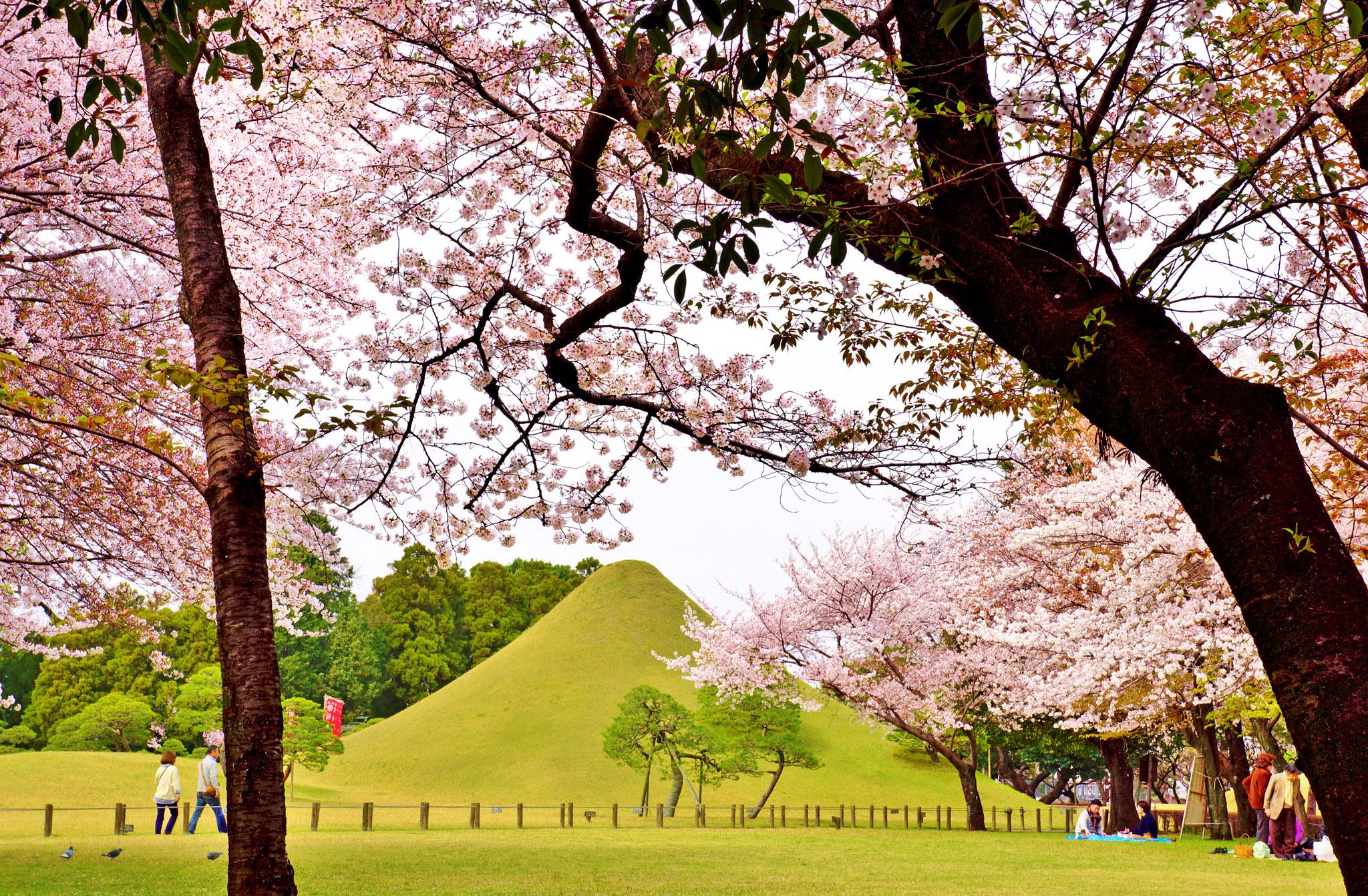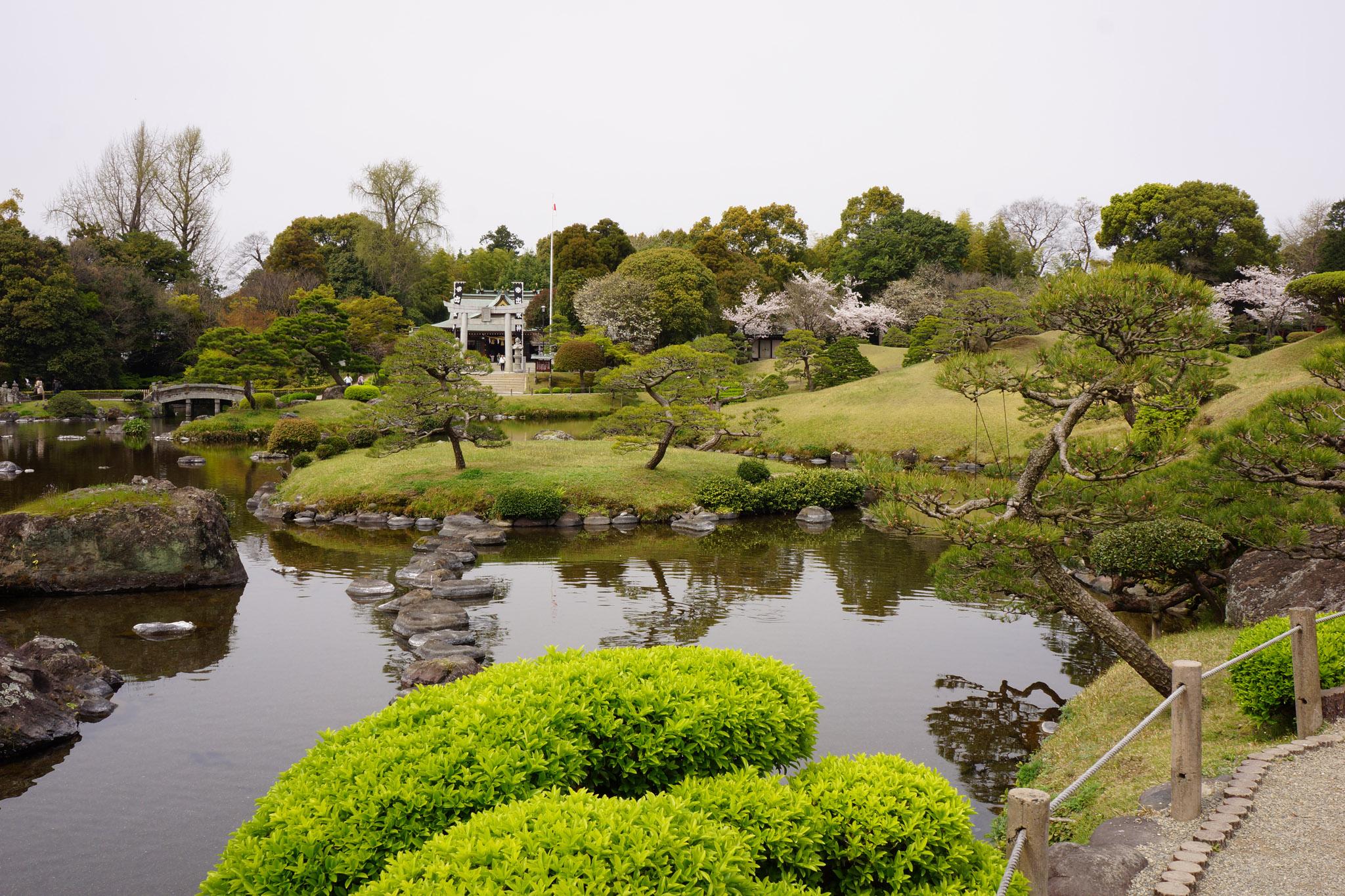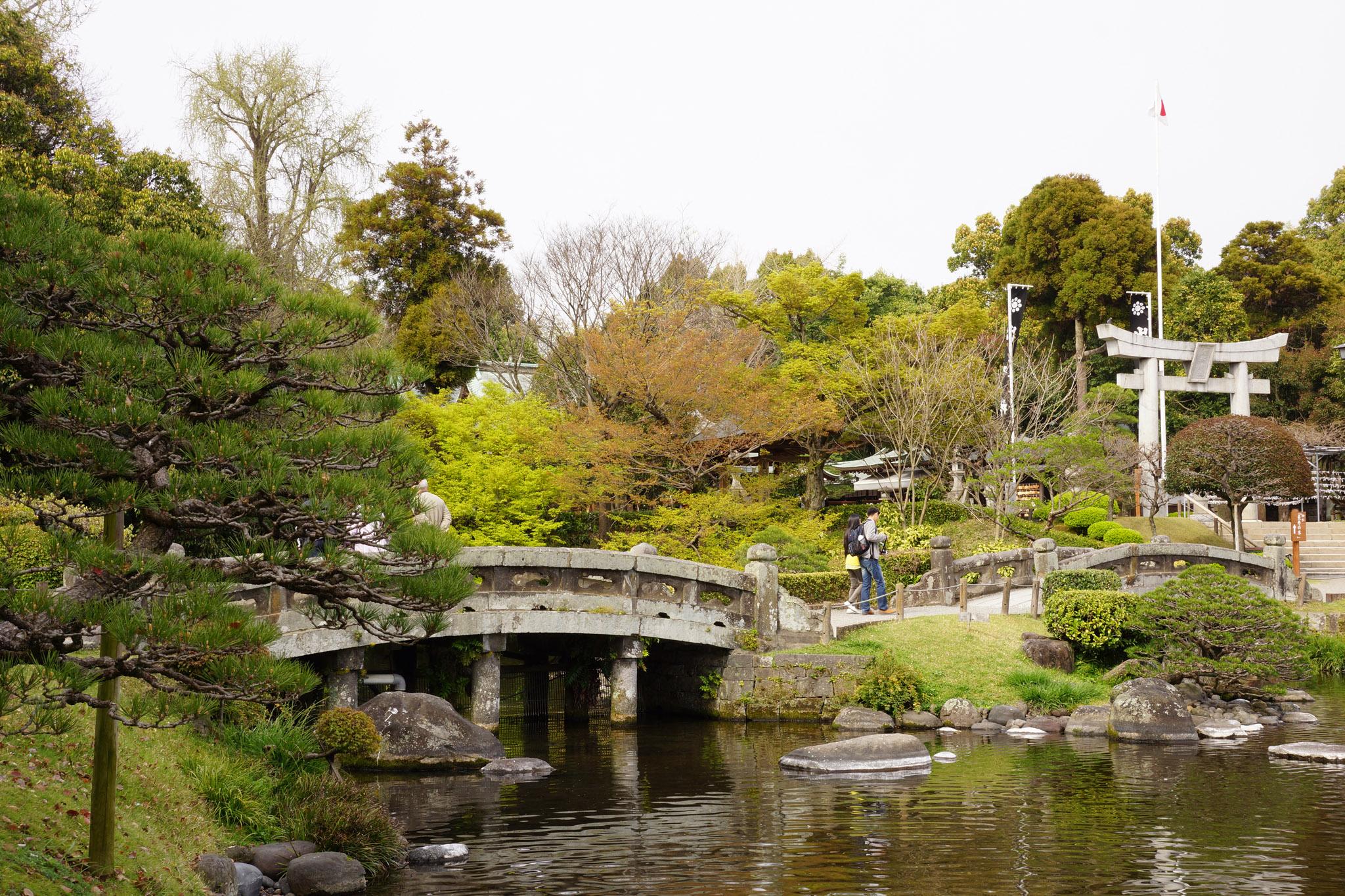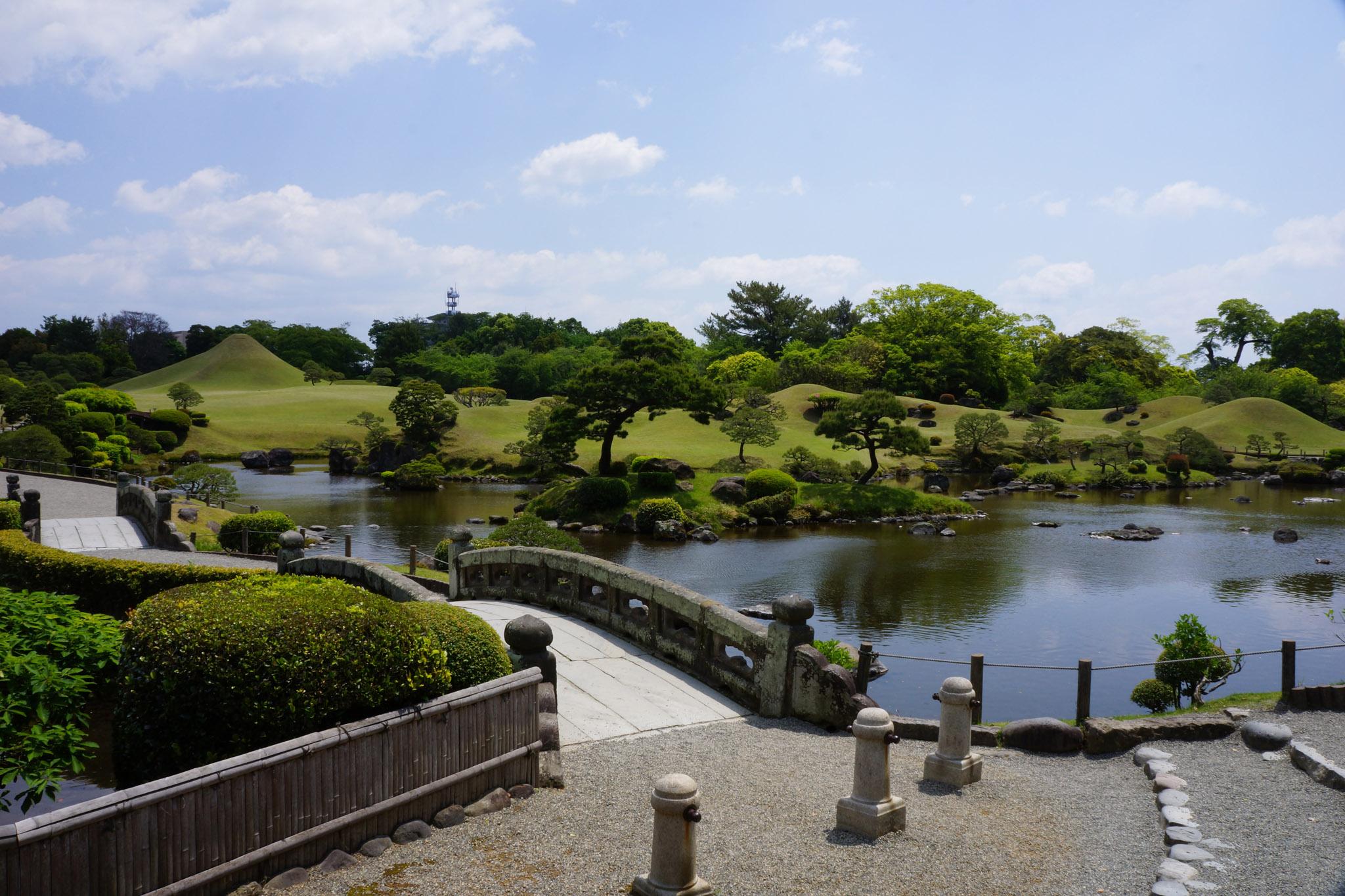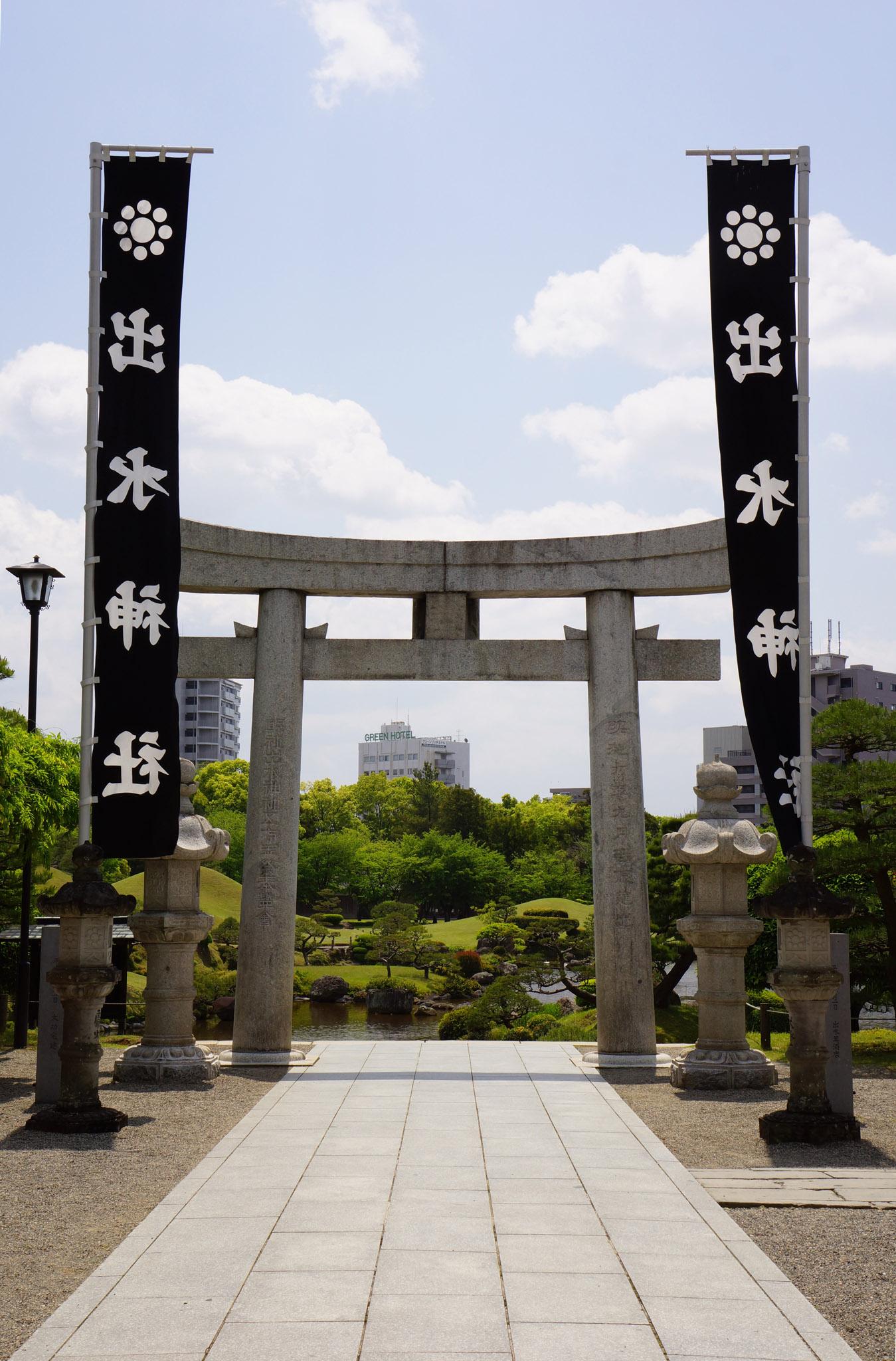This garden on the southeast side of Kumamoto Castle was created by Hosokawa Tadatoshi (1586–1641), who took control of the Higo (Kumamoto) domain in 1632. He built a Buddhist temple called Suizenji and a teahouse here in the 1630s.
Suizenji Jojuen is a stroll garden (kaiyushiki teien) set around a pond fed by springs from Mount Aso. Two stone bridges that date from the Meiji era (1868–1912) are at the entrance. To the east, on the far side of the lake, is a strikingly symmetrical tsukiyama, or artificial mountain, evoking the shape of Mt. Fuji. To the north of the garden is the Izumi Shrine, dating from 1878, the year after the city of Kumamoto was burned down in the Satsuma Rebellion. It is said that the rebels may have used the miniature Mt. Fuji to mount an artillery battery in the attack. The pine tree here is said to have grown from a bonsai cultivated by the first-generation Hosokawa lord, Tadatoshi. A little further on is Inari Shrine, preceded by its vermilion gates. Just beside the shrine, which venerates the deity of the harvest, are four groves of plum trees that flower in early spring.
Archery on Horseback and Cultivated Flowers
Running along the east end of the garden is a straight avenue covered with gravel. Yabusame horseback archery has been performed here as part of the spring and autumn festivals of Izumi Shrine since 1878, when the shrine was built. The Hosokawa family were the heads of the Takeda school of Japanese archery, which is now more religious ritual than martial art. Five of the six traditional Higo flowers are grown along the avenue: the Higo camellia, sasanqua, peony, chrysanthemum, and iris. At the southern end of the avenue is a small area where Hosokawa-style bonseki—white sand, pebbles, and rocks arranged on a black lacquer tray to re-create famous landscapes in miniature—are presented on a larger scale in an interesting departure from tradition.
Noh Theater by Torchlight
There are four groves of cherry trees leading to a Noh theater at the southern end of the garden. Hosokawa Fujitaka (1534–1610), founder of the clan and grandfather of Tadatoshi, was an accomplished Noh drummer, and all the Hosokawa were devoted patrons of Noh. The original Noh theater here, which was built in 1878, burned down in 1965. The present theater is an 1878 structure that was moved here in 1986. It belonged to the Matsui family, who were lords of Yatsushiro Castle, a domain to the south of Kumamoto. Evening Noh performances are held here by torchlight in the summer months.
At the west end of the garden is Kokindenju no Ma, a 400-year-old building with a thatched roof. The view overlooking the pond, framing the best of the entire garden, can be enjoyed here with a cup of green tea.

